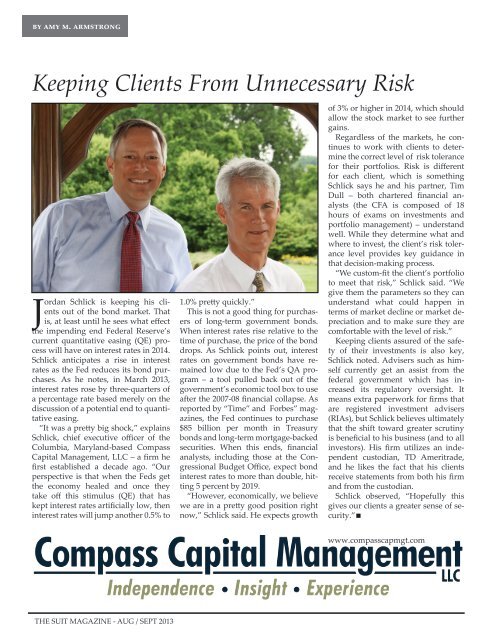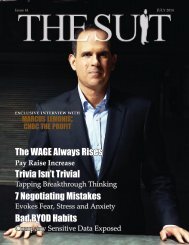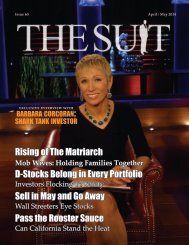GAME OF DRONES
The drone revolution has finally entered the American psyche. In fact, in late-December, the Federal Aviation Administration revealed that they have chosen several sites in a number of states to test unmanned drones in order to integrate them into our national airspace. The climate has certainly changed and unmanned aerial vehicles, or drones - will be written by professional journalists, who offer a fresh perspective and an objective eye that will give you a well-rounded look at big topics. Our reporters L.A. Rivera, Amy Armstrong and Monica Link have chronicled a story dubbed, “Year Of The Drones,” which looks into the future of drones in America.
The drone revolution has finally entered the American psyche. In fact, in late-December, the Federal Aviation Administration revealed that they have chosen several sites in a number of states to test unmanned drones in order to integrate them into our national airspace. The climate has certainly changed and unmanned aerial vehicles, or drones - will be written by professional journalists, who offer a fresh perspective and an objective eye that will give you a well-rounded look at big topics. Our reporters L.A. Rivera, Amy Armstrong and Monica Link have chronicled a story dubbed, “Year Of The Drones,” which looks into the future of drones in America.
Create successful ePaper yourself
Turn your PDF publications into a flip-book with our unique Google optimized e-Paper software.
y amy m. armstrong<br />
Keeping Clients From Unnecessary Risk<br />
Jordan Schlick is keeping his clients<br />
out of the bond market. That<br />
is, at least until he sees what effect<br />
the impending end Federal Reserve’s<br />
current quantitative easing (QE) process<br />
will have on interest rates in 2014.<br />
Schlick anticipates a rise in interest<br />
rates as the Fed reduces its bond purchases.<br />
As he notes, in March 2013,<br />
interest rates rose by three-quarters of<br />
a percentage rate based merely on the<br />
discussion of a potential end to quantitative<br />
easing.<br />
“It was a pretty big shock,” explains<br />
Schlick, chief executive officer of the<br />
Columbia, Maryland-based Compass<br />
Capital Management, LLC – a firm he<br />
first established a decade ago. “Our<br />
perspective is that when the Feds get<br />
the economy healed and once they<br />
take off this stimulus (QE) that has<br />
kept interest rates artificially low, then<br />
interest rates will jump another 0.5% to<br />
1.0% pretty quickly.”<br />
This is not a good thing for purchasers<br />
of long-term government bonds.<br />
When interest rates rise relative to the<br />
time of purchase, the price of the bond<br />
drops. As Schlick points out, interest<br />
rates on government bonds have remained<br />
low due to the Fed’s QA program<br />
– a tool pulled back out of the<br />
government’s economic tool box to use<br />
after the 2007-08 financial collapse. As<br />
reported by “Time” and Forbes” magazines,<br />
the Fed continues to purchase<br />
$85 billion per month in Treasury<br />
bonds and long-term mortgage-backed<br />
securities. When this ends, financial<br />
analysts, including those at the Congressional<br />
Budget Office, expect bond<br />
interest rates to more than double, hitting<br />
5 percent by 2019.<br />
“However, economically, we believe<br />
we are in a pretty good position right<br />
now,” Schlick said. He expects growth<br />
of 3% or higher in 2014, which should<br />
allow the stock market to see further<br />
gains.<br />
Regardless of the markets, he continues<br />
to work with clients to determine<br />
the correct level of risk tolerance<br />
for their portfolios. Risk is different<br />
for each client, which is something<br />
Schlick says he and his partner, Tim<br />
Dull – both chartered financial analysts<br />
(the CFA is composed of 18<br />
hours of exams on investments and<br />
portfolio management) – understand<br />
well. While they determine what and<br />
where to invest, the client’s risk tolerance<br />
level provides key guidance in<br />
that decision-making process.<br />
“We custom-fit the client’s portfolio<br />
to meet that risk,” Schlick said. “We<br />
give them the parameters so they can<br />
understand what could happen in<br />
terms of market decline or market depreciation<br />
and to make sure they are<br />
comfortable with the level of risk.”<br />
Keeping clients assured of the safety<br />
of their investments is also key,<br />
Schlick noted. Advisers such as himself<br />
currently get an assist from the<br />
federal government which has increased<br />
its regulatory oversight. It<br />
means extra paperwork for firms that<br />
are registered investment advisers<br />
(RIAs), but Schlick believes ultimately<br />
that the shift toward greater scrutiny<br />
is beneficial to his business (and to all<br />
investors). His firm utilizes an independent<br />
custodian, TD Ameritrade,<br />
and he likes the fact that his clients<br />
receive statements from both his firm<br />
and from the custodian.<br />
Schlick observed, “Hopefully this<br />
gives our clients a greater sense of security.”<br />
www.compasscapmgt.com<br />
THE SUIT MAGAZINE - AUG / SEPT 2013










